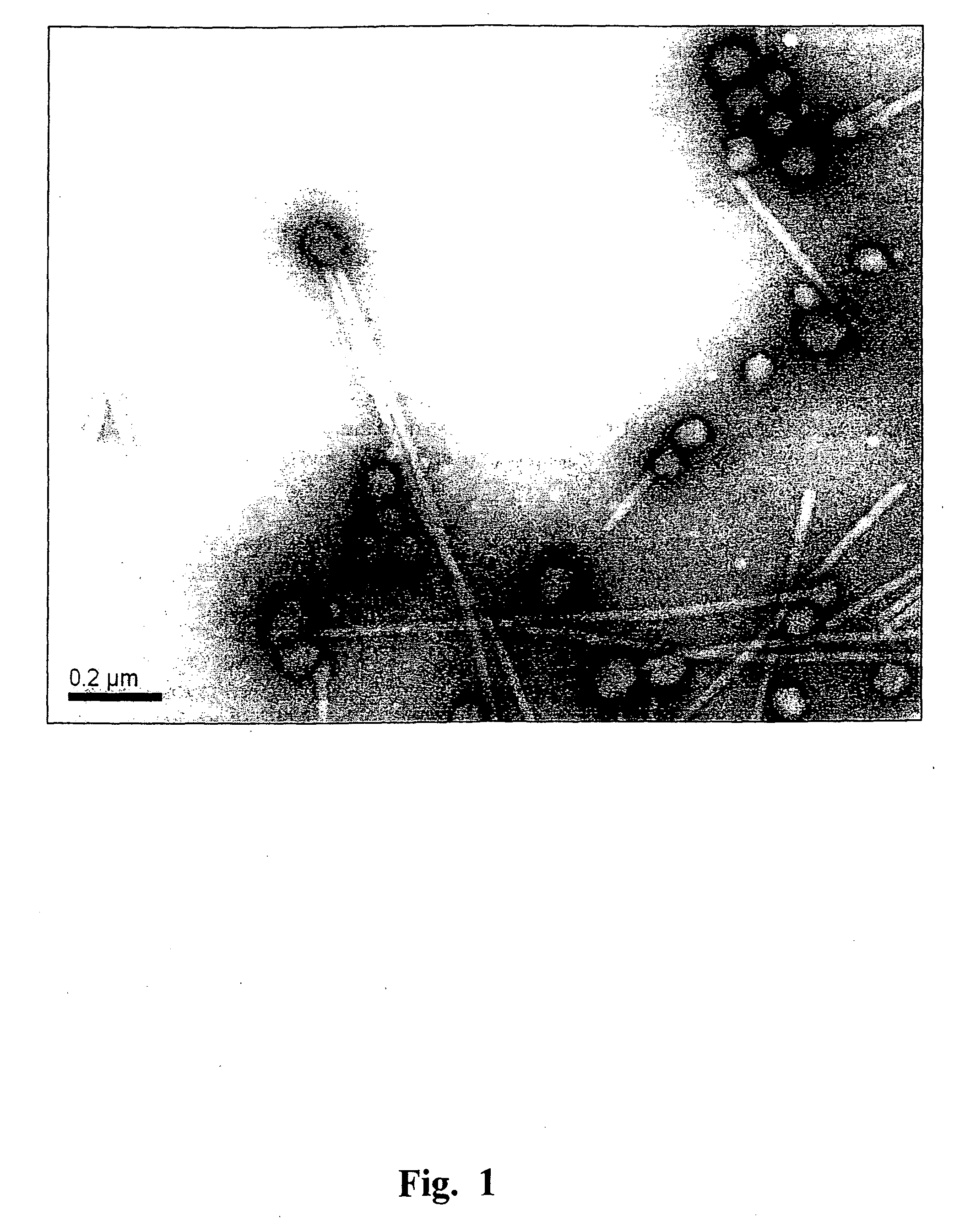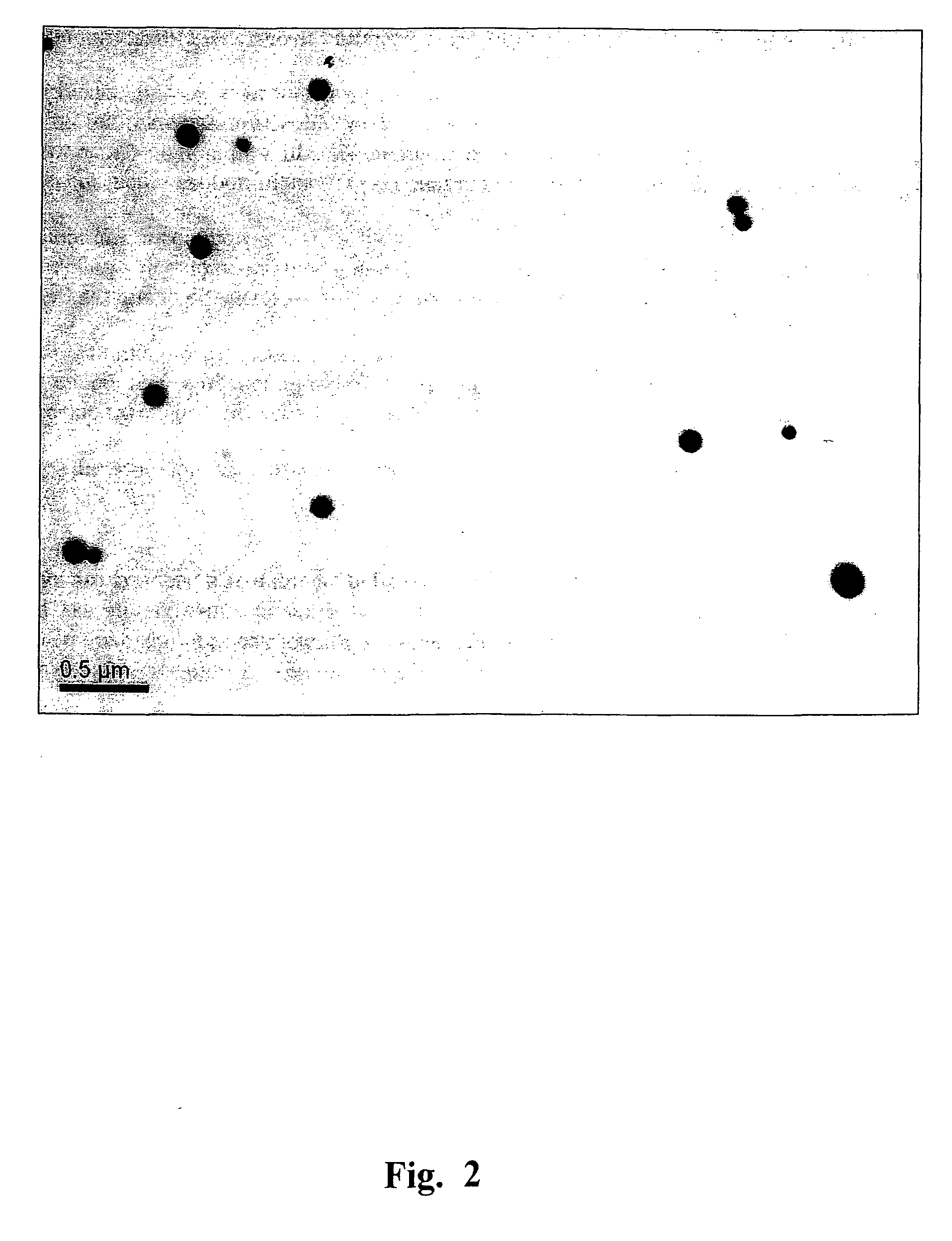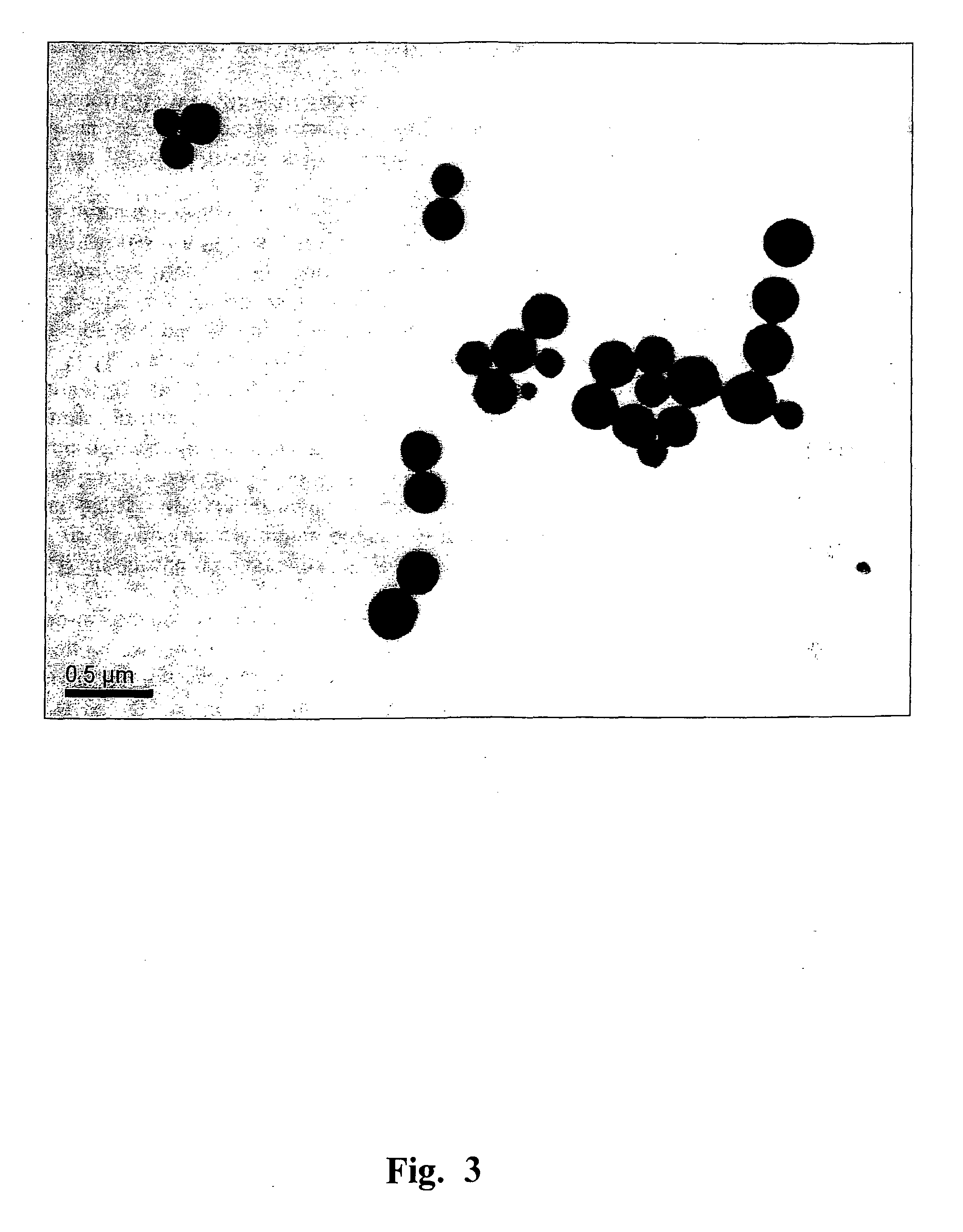Spherical NANO and microparticles derived from plant viruses for the display of foreign proteins or epitopes
a technology of plant viruses and nanoparticles, which is applied in the direction of viral antigen ingredients, peptide sources, carrier-bound antigen/hapten ingredients, etc., can solve the problems of genetic instability, labor- and time-consuming, and the study was not developed later
- Summary
- Abstract
- Description
- Claims
- Application Information
AI Technical Summary
Benefits of technology
Problems solved by technology
Method used
Image
Examples
example 1
Native Tobamoviruses and Different Forms of TMV CP Aggregates
[0145]TMV U1 strain was isolated from systemically infected Nicotiana tabacum L. cv. Samsun plants as described previously (Novikov, V. K. and Atabekov, J. G. (1970) A study of the mechanism controlling the host range of plant virus. I Virus—specific receptors of Chenopodium amaranticolor. Virology 41, 101-107).
[0146]Cucumber green mottle mosaic virus (CGMMV) was isolated from the extracts of systemically infected cucumber plants, clarified at 10,000 g, emulgated with chlorophorm (30 min) and centrifuged at 400 rpm for 30 min. Then polyethileneglicol (PEG 6000) was added (3%) to supernatant with 0.2M NaCl and incubated for night at 40%. After centrifugation at 10,000 g the pellet was resuspended in 0.02 M Tris-HCl, 0.001M EDTA, pH 7.5 and clarified at 10,000 g. The extraction from the pellet was repeated twice. The supernatants were mixed and subjected to two cycles of differential centrifugation (for 2 h at 45,000 rpm in ...
example 2
Generation of SPs and their Examination by Transmission and Scanning Electron Microcopy
[0148]Heating of TMV and viral RNA-free CP preparations was performed in the “Tercyc” thermocycler (“DNA-technology”, Russia) for 10 sec at the temperature required. The process of the native TMV into SP transition was examined by TEM and SEM. The specimens were prepared as reported previously (Kaftanova A. S., Kiselev N. A., Novikov V. K., Atabekov J. G. (1975) Structure of products of protein reassembly and reconstitution of potato virus X. Virology 65, 283-287). The samples were viewed using a JEOL JEM-1011 microscope (JEOL, Japan) operating at 80 kV. Digital images were captured using a Gatan Erlangshen ES500W camera and Gatan Digital Micrograph™ software. For SEM, a drop of the sample was placed on a specimen stub and dried in air, then sputtered with gold with palladium in an ionic sputtering installation IB-3 Ion Coater (Eico, Japan), and examined in microscope JSM-6380LA (JEOL, Japan). FIG...
example 3
SPs Generation by RNA-Free Preparations of TMV CP
[0149]FIG. 8 presents a schematic (not to scale) representation of the SPs generation by native TMV and by RNA-free forms of TMV protein. The numbers indicate concentrations of native TMV (at left) and RNA-free TMV proteins (at right) heated at 94° C. or 65° C., respectively. The size ranges of SP (in nm) are indicated.
PUM
| Property | Measurement | Unit |
|---|---|---|
| temperature | aaaaa | aaaaa |
| size | aaaaa | aaaaa |
| size | aaaaa | aaaaa |
Abstract
Description
Claims
Application Information
 Login to view more
Login to view more - R&D Engineer
- R&D Manager
- IP Professional
- Industry Leading Data Capabilities
- Powerful AI technology
- Patent DNA Extraction
Browse by: Latest US Patents, China's latest patents, Technical Efficacy Thesaurus, Application Domain, Technology Topic.
© 2024 PatSnap. All rights reserved.Legal|Privacy policy|Modern Slavery Act Transparency Statement|Sitemap



